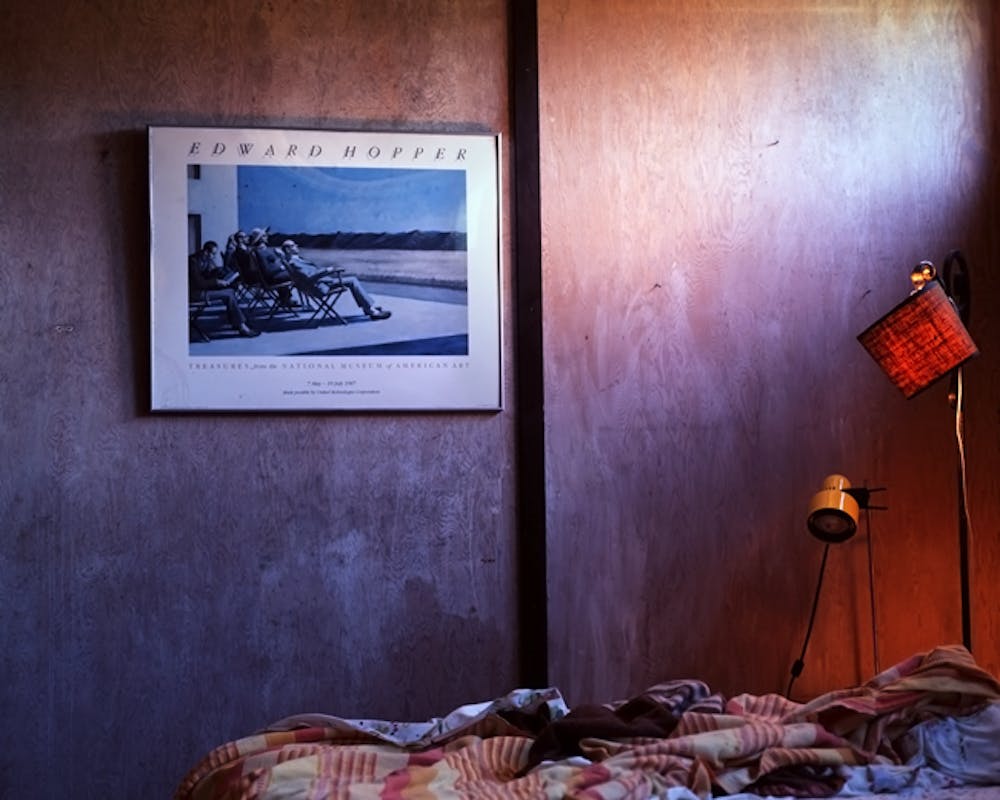Street: What are you currently working on? Christina Kerns: Currently I’ve been focusing on social class and the signifiers/implications of this regionally in the United States. Last fall I was working on some different tangential ideas stemming from where I grew up, mainly coming from a concept called “The Rural Brain Drain.” My focus stemmed from my literal participation in this occurrence and the implications of this on the people remaining in the areas being drained. While trying to work through these concepts last fall my work took some strange turns, which ultimately led me to the photographs I took in Lugo Land.
Street: Tell us about Lugo Land. CK: Lugo Land is a photographic artist residency in Lugo, Italy, which has a connection to PennDesign. In this instance, anyone in the M.F.A. program could submit a proposal, which was reviewed by the faculty and residency director, Luca Nostri, to choose the most compelling and feasible project. Last year, Kelsey Halliday Johnson was the first student to participate, and because of her success along with the strong project proposals this year they sent two students, Minmin Shi and myself. We spent 4 weeks in Lugo, Italy, photographing and soaking up the culture with the prospect of constructing books for the final outcome.
Street: What’s the best part about working from an artist’s residency? The worst? CK: This was my first residency and I don’t know how it could have been any better. Being out of my element allowed me to really explore ideas and strip myself away from my former constraints. The only bad thing was the time, but I think if I had more time the urgency may have been too lax.
Street: How do you choose places for your images? CK: For the interior photographs in the U.S. I mostly shot places I had been to for one reason or another. I was looking at them more as a document of a place that meant something to me, but stripping away the physical memories and just leaving just the space. Most of these images were shot in the past and after revisiting them last fall I found some interesting contradictory elements that gave some of the spaces a very slow reading depth. When in Italy, I used the help of the residency director Luca Nostri to find most of my participants. This forced me to find a connection to people that I didn’t have any relationship to and for the most part couldn’t communicate with.
Street: How do you approach photographing spaces that are sometime very personal to the people that own them? Walk us through your process. CK: Well first, I wanted to make sure that the participants were completely comfortable with wherever I shot. Because of that there were some spaces that were off limits, but ultimately I found that some of the spaces people thought weren’t interesting had the most character. Generally people wouldn’t offer to let me shoot their homes if they weren’t comfortable with this intrusiveness, so it wasn’t a big issue.
Street: Tell us about your favorite medium. CK: I mostly use photography. Although, last fall I experimented with some sewn pieces as well as sculptural installations. I think the inherent deception that the camera or photographic image contains is something I tend to go back to. Because I’ve been shifting between constructed photography and found spaces, I’ve had to question how they can tie together. Because contemporary photography (in mass media or otherwise) has been pushing the boundaries and questioning the real, I’m able to exploit this tension and bounce these ideas off of each other.
Street: What are you working on now? CK: My photographic practice has always lived in the studio. Last fall I was finding I had a form of writer’s block, which I found was partially attributed my self–imposed limitations of working in a very specific studio setting. Shooting in Italy freed me from this controlled constructed practice I had become accustomed to, and ultimately let me think more freely about the concepts I had trouble translating artistically before. My next series incorporates a lot of these social ideas by looking introspectively through self-portraits.
Street: Where is your work heading in terms of self-portraits? Do you see yourself experimenting with any new media? CK: The self–portraits have the potential to take a lot of different turns, which I’m very excited about. Through a sociology course, I’ve been thinking a lot about female adornment and the reasons for objects having social implications. I hope that I can continue to explore these ideas through different avenues. As for other mediums, I am brainstorming an installation sound piece, which I hope to complete later this spring. More to come on that!
[photospace]

